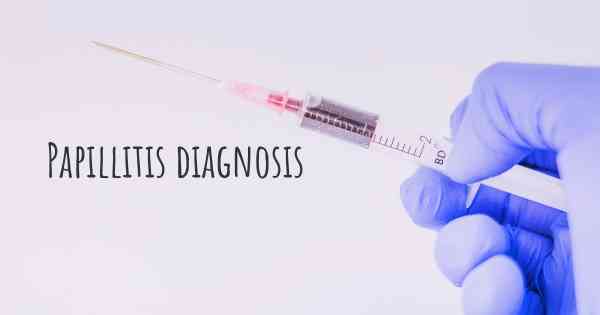How is Papillitis diagnosed?
See how Papillitis is diagnosed. Which specialists are essential to meet, what tests are needed and other useful information for the diagnosis of Papillitis

Papillitis, also known as optic neuritis, is a condition characterized by inflammation of the optic nerve. It can cause vision loss, eye pain, and changes in color perception. Diagnosing papillitis involves a combination of medical history evaluation, physical examination, and diagnostic tests.
Medical history evaluation: The doctor will ask the patient about their symptoms, including the onset, duration, and severity of vision problems, eye pain, or any other related symptoms. They will also inquire about any underlying medical conditions or recent infections that could be contributing factors.
Physical examination: The doctor will perform a comprehensive eye examination to assess visual acuity, pupillary reactions, and the appearance of the optic nerve. They may use an ophthalmoscope, a handheld instrument with a light and magnifying lens, to examine the back of the eye and specifically the optic disc.
Diagnostic tests: To confirm the diagnosis of papillitis and rule out other possible causes, several tests may be conducted:
- Visual field test: This test measures the patient's peripheral vision to detect any abnormalities.
- Color vision test: It assesses the patient's ability to perceive and differentiate colors accurately.
- Optical coherence tomography (OCT): This non-invasive imaging test provides detailed cross-sectional images of the retina, allowing the doctor to evaluate the thickness of the optic nerve and detect any swelling or damage.
- Blood tests: These may be performed to check for markers of inflammation, autoimmune diseases, or infections that could be associated with papillitis.
- Magnetic resonance imaging (MRI): In some cases, an MRI scan of the brain and optic nerves may be ordered to identify any structural abnormalities or lesions that could be causing the inflammation.
It is important to note that the diagnosis of papillitis requires the expertise of an ophthalmologist or a neuro-ophthalmologist. They will carefully evaluate the patient's symptoms, perform the necessary tests, and interpret the results to make an accurate diagnosis. Early diagnosis and treatment are crucial in managing papillitis and preventing further vision loss.








